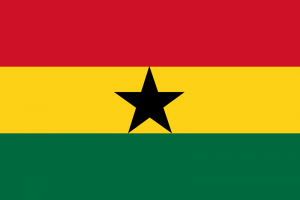Language/Dagbani/Pronunciation/Alphabet-and-Pronunciation
Hello, Dagbani Learners! 😃
➡ In today's lesson you will learn how to write and pronounce the Dagbani Alphabet.
Happy learning!
Dagbani is member of the Gur branch of Niger-Congo languages. It is spoken mainly in northern Ghana by 800,000 Dagomba people. It is closely related to, and mutually intelligible with, Mossi, which is spoken mainly in Burkina-Faso. Dagbani is also known as Dagbamba, Dagbane and Dagomba.
Dagbani is taught in primary and secondary schools, and there are radio programmes in the language.
Keep in mind that pronunciation may vary across different dialects and regions.
Phonology[edit | edit source]
Vowels[edit | edit source]
Dagbani has eleven phonemic vowels – six short vowels and five long vowels:
| Front | Central | Back | |
|---|---|---|---|
| High | i | ɨ | u |
| Mid | e | o | |
| Low | a |
| Front | Central | Back | |
|---|---|---|---|
| High | iː | uː | |
| Mid | eː | oː | |
| Low | aː |
Olawsky (1999) puts the schwa (ə) in place of /ɨ/, unlike other researchers on the language who use the higher articulated /ɨ/. Allophonic variation based on tongue-root advancement is well attested for 4 of these vowels: [i] ~ [ɪ]/[ə], [e] ~ [ɛ], [u] ~ [ʊ] and [o] ~ [ɔ].
Consonants[edit | edit source]
| Labial | Alveolar | Palatal | Velar | Labial-velar | ||
|---|---|---|---|---|---|---|
| Nasal | m | n | ɲ | ŋ | ŋ͡m | |
| Stop | Voiceless | p | t | k | k͡p | |
| Voiced | b | d | ɡ | ɡ͡b | ||
| Fricative | Voiceless | f | s | |||
| Voiced | v | z | ||||
| Lateral | l | |||||
| Approximant | ʋ | r | j | |||
Tone[edit | edit source]
Dagbani is a tonal language in which pitch is used to distinguish words, as in gballi [ɡbálːɪ́] (high-high) 'grave' vs. gballi [ɡbálːɪ̀] (high-low) 'zana mat'. The tone system of Dagbani is characterised by two level tones and downstep (a lowering effect occurring between sequences of the same phonemic tone).
Writing system[edit | edit source]
A teacher at School for Life, a project in northern Ghana Dagbani is written in a Latin alphabet with the addition of the apostrophe, the letters ɛ, ɣ, ŋ, ɔ, and ʒ, and the digraphs ch, gb, kp, ŋm, sh and ny. The literacy rate used to be only 2–3%. This percentage is expected to rise as Dagbani is now a compulsory subject in primary and junior secondary school all over Dagbon. The orthography currently used (Orthography Committee /d(1998)) represents a number of allophonic distinctions. Tone is not marked.
| a | b | ch | d | e | ɛ | f | g | gb | ɣ | h | i | j | k | kp | l | m | n | ny | ŋ | o | ɔ | p | r | s | sh | t | u | w | y | z | ʒ | ’ |
Videos[edit | edit source]
Dagban Bachi (Alphabets in Dagbanli)[edit | edit source]

